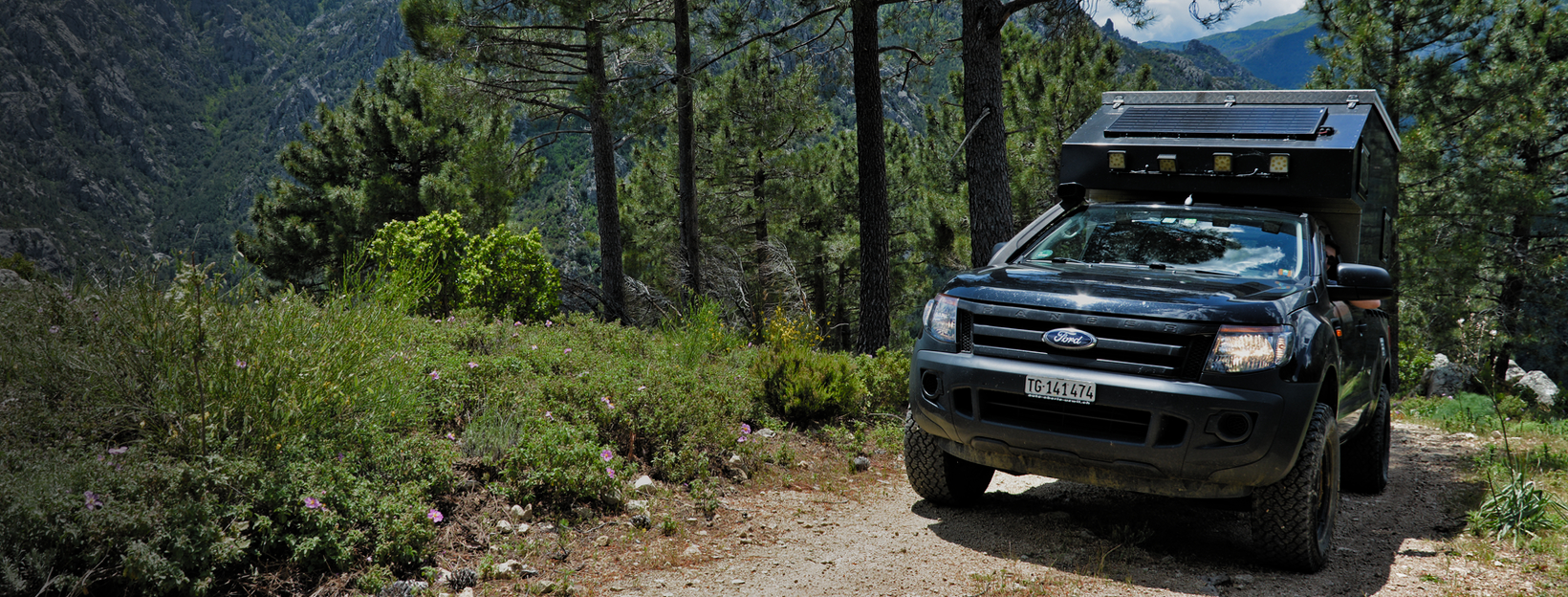Our journey is accompanied by our trusted overlanding pickup truck. We bought it 2 years ago with this trip in the back of our heads. We were torn between a more standard bus and a 4wd. The thought of travelling for thousands of kilometres, only to be stuck a few before an amazing sight made us pick the pricier 4wd option.
WHERE DOES THE NAME COME FROM?
We bought the Pantherli second hand. As the previous owner described the car he mentioned, that the black colour is officially called panther-black. We found this amusing and started calling it “Pantherli” as the diminutive form of panther.
WHAT KIND OF OVERLANDING PICKUP IS IT?
The basis of the Pantherli is a Ford Ranger pickup truck from 2015. It’s the 2.2 tdci, 4×4, Single Cab version, which is only available as an XL-model. This means it has heavy-duty springs in the back, which is perfect for the cabin. The common rail motor is one of the most common around the world, which makes us hopeful, that a lot of people can repair it. Being from 2015 it already has a lot of built-in electronics compared to other expedition vehicles. We hope this will not bite us in the ass. Currently, we have General Grabber AT2 tyres on it but are contemplating whether to change them before starting the trip. As of now, the Pantherli has done a mere 35’000km, hopefully giving us a lot of issue-free kilometres. Looking at our planned route this is a must.

WHAT’S THE OVERLANDING CABIN LIKE?
Small but hopefully enough for 2 people travelling a couple of years. The previous owner bought an ORTEC aluminum cabin and furnished it himself. It’s not a professional build, but we couldn’t do it any better. The cab has a lifting roof and I can stand comfortably with the roof lifted. Carole can even stand in it without the lifted roof. The advantage of the aluminum cabin is that it’s rather lightweight, but we still need to go to a weighing station to check, that we don’t exceed the 3.5 tons fully packed.
The cabin is mostly isolated with JACKODUR 30mm and needle felt. There are some cold bridges which we haven’t fixed yet.
Overall we’re a little more than 3 meters high. With the tyres deflated we should even fit a standard-sized container. There are no big overhanging parts on the side or in the back, helping overall maneuverability and offroading.
IS IT EQUIPPED LIKE A FULL APARTMENT?
Unfortunately not, but we do have some electricity from our solar panel. This electric cycle is completely separated from the car’s electric cycle, which prevents us from accidental draining of the battery for starting the motor.
Generally, we prefer cooking outside, nonetheless, we have a small gas stove inside for bad weather cooking. There’s also a tiny sink with a pump we seldom used so far.
We bought a small portable toilet to be more flexible. There is no warm water and we lack a proper shower. A camp shower, which is a black bag, and a shower/toilet pop-up tent will have to do it for now. We’ll have to see, whether we’ll change this once we’re on the road.
One of the bigger investments was the installation of the diesel park heating system. It’s a Russian system and a little oversized for our cabin, as it overheats if turned beyond the lowest level. It is enough heating power for us and we already tested it comfortably at -10° celsius.
Later on, we might do a more detailed pack list and some more pictures.


